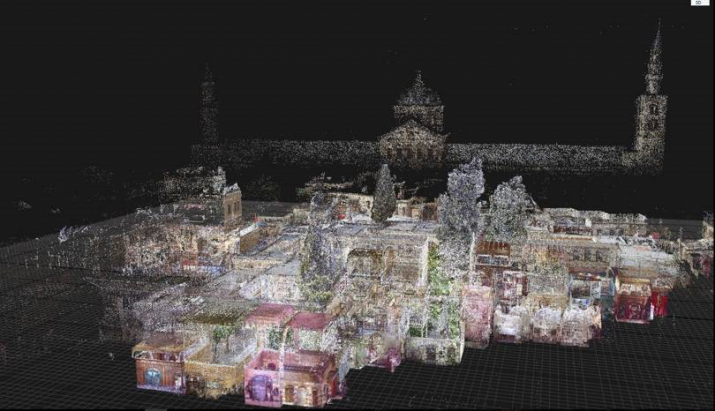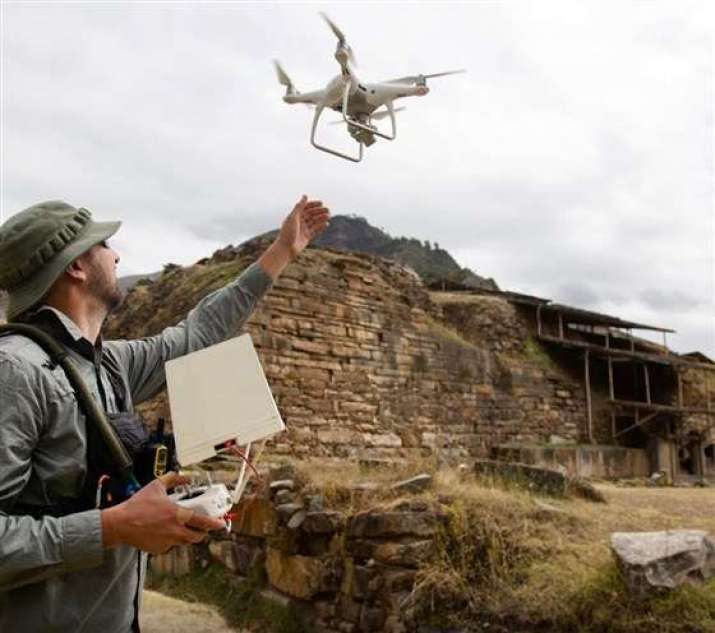NEWS
CyArk and Google’s Digital Database Enables VR Exploration of At-risk Heritage Sites
 A scan of Al Azem Palace in Syria. Image by CyArk/Open Heritage
A scan of Al Azem Palace in Syria. Image by CyArk/Open HeritageCyArk, a US-based non-profit organization focused on cataloging and preserving world heritage sites in a 3D database, has partnered with Google Arts & Culture to allow the public to access part of their expansive world heritage database. Anyone with access to Google on a computor or mobile device can now explore some of the archeological wealth the world has to offer in 3D and at their leisure.
The Open Heritage project provides virtual access to 26 world heritage sites in 18 countries, including the Buddhist temples of Bagan, Myanmar, and the temples of Ayutthaya in Thailand. Some of these sites are ancient monuments from long-gone civilization, while others are more recent additions to the world heritage portfolio, such as the Brandenburg Gate in Berlin, and quite a few can be difficult to visit in the real world.
The Open Heritage Project. From youtube.com
The 3D models on the project’s website are the result of digital photography, aerial drone imaging, and cutting-edge laser-scanning technology called LiDAR (light detection and ranging) used by CyArk to create detailed 3D represntations of the heritage sites, combined with Google’s new virtual reality (VR) interface. In order to present some of CyArk’s models, Google converted their images into more consumer-friendly versions that can be accessed by computers, mobile devices, and Google Daydream-compatible VR headsets. “We wanted to make sure this was accessible to anyone, whether they’re on a phone, waiting for a bus, or at home on a high-end computer,” said Chance Coughenour, a digital archaeologist managing the project for Google. (Wired)
Visitors without a compatible VR headset can still access the project via their Google Chrome browser and examine high-resolution 360-degree photographs of the sites and relics from various angles, zooming in for a more detailed view. The data on the website is open-source, so academics and archaeologists can use the resource for their own research.
 A CyArk specialist uses a drone to take photogrammetry images at Chavin de Huantar, in Peru. Image credit CyArk/Open Heritage
A CyArk specialist uses a drone to take photogrammetry images at Chavin de Huantar, in Peru. Image credit CyArk/Open HeritageThe heritage sites available on the website are just a fraction of the hundreds that CyArk has documented since 2003. The destruction of the 1,500-year-old Buddhist statues of Bamiyan, Afghanistan, by the Taliban in 2001 inspired CyArk’s founder Ben Kacyra to utilize some of the technology that he helped to create (including the LiDAR scanner) to make three-dimensional digital records in case the sites are damaged or destroyed.
CyArk’s data has already been put to good use: data on Buddhist temples at Ayutthaya, for example, has been used to assess subsidence at one of the temples cause by a major flood in 2011. And shortly after CyArk finished mapping the temples of Bagan in 2016, a devastating 6.8-magnitude earthquake damaged several structures. The data is now being used in a UNESCO pilot project that is studying how to conserve these monuments.
The temples of both Ayutthaya and Bagan are part of the Open Heritage exhibition. The virtual tour of Bagan even details reconstruction efforts based on CyArk’s data, and gives visitors an impression of how the area looked before and after the devastating earthquake.
/https://public-media.smithsonianmag.com/filer/6a/1e/6a1e8c62-1fed-46f0-8ca6-9317f088bf9b/gif_bagan_before_and_after.gif)
Images of a temple at Bagan, before and after the eathquake. Image credit CyArk/Open Heritage
“CyArk has accomplished some incredible things in the 15 years since it was started, capturing data on hundreds of sites on all seven continents,” Ristevski noted. “As we close the loop on this final important component of our mission, it feels more like a beginning rather than a completion. There is an incredible power in sharing this information with a broad community and we can’t wait to see what they do with it.” (CyArk)
CyArk intends to add nine more locations to the website in the coming months, including the World War I battleground at Flanders Fields in Belgium, and the Washington Monument, in the United States, with more to come.
See more
Open Heritage (Google Arts and Culture)
CyArk
Now you can visit world heritage sites in virtual reality (NBC News)
Google's 3D models are saving the world’s most at-risk heritage sites (Wired)
Google Arts & Culture explores remote world heritage sites in virtual reality (Digital Trends)
Check Out the World’s Largest Archive Digitally Preserving At-Risk Heritage Sites (Smithsonian.com)
Google Showcases Virtual 3D Models of Breathtaking Endangered World Wonders (Fortune)
Related news from Buddhstdoor Global
Myanmar Renews Bid to Gain World Heritage Status for Bagan Archaeological Zone
Is Time Running Out for the 5,000-year-old Mes Aynak Archeological Site in Afghanistan?
Dunhuang Airport to Close for Expansion as Popularity of Mogao Caves Takes Off
7th Century Buddha Image in Pakistan Restored Nine Years After Islamist Desecration
University of Chicago Digitally Restoring China’s Tianlongshan Caves With 3D Scanners
Three Dead, Scores of Ancient Buddhist Temples Damaged in Myanmar Quake














